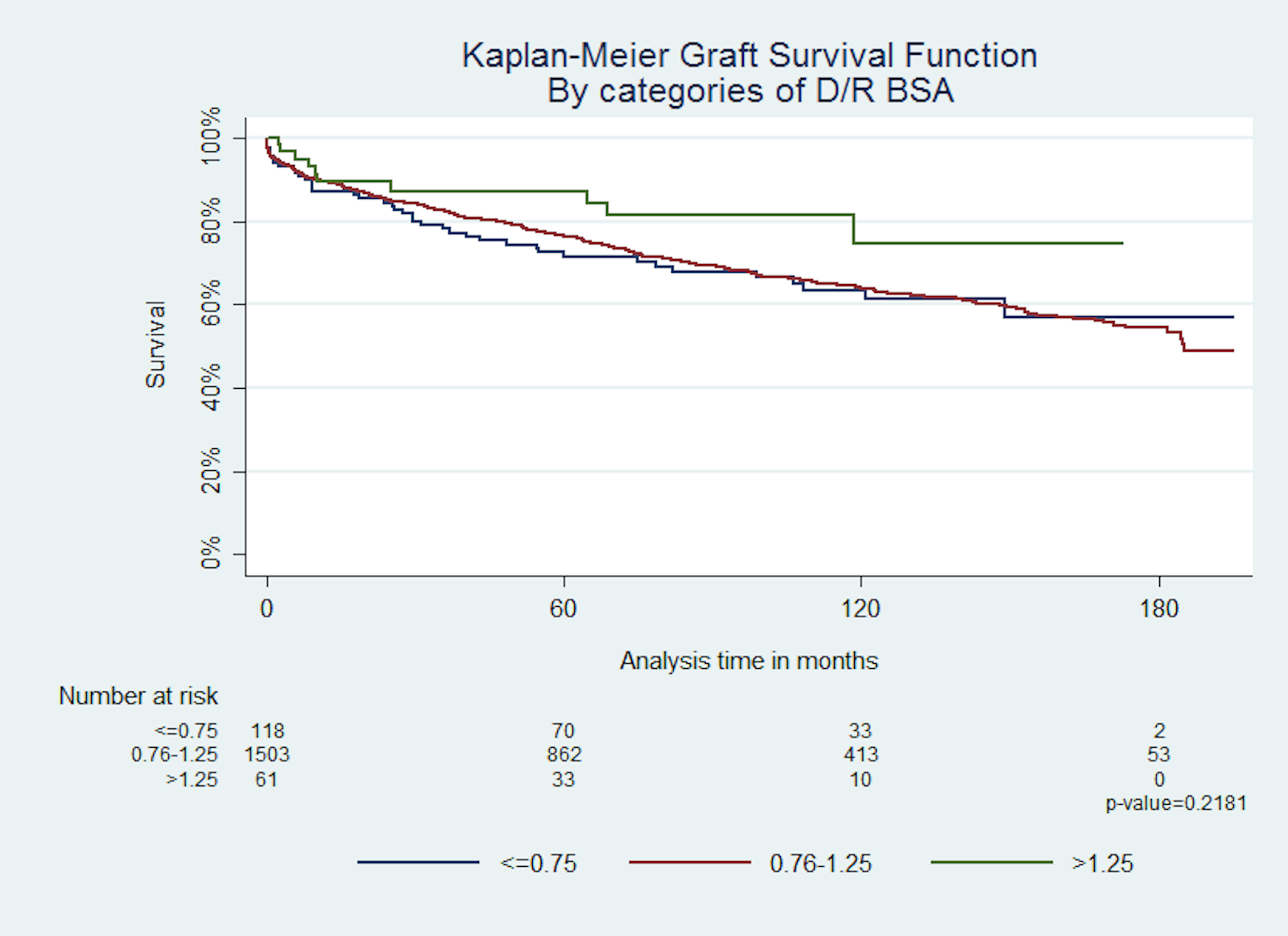Donor – Recipient Size Mismatch Has No Impact on Outcomes after Deceased Donor Whole Liver Transplantation: A Single Center Analysis
1Department of Surgery, Indiana University Hospital, Indianapolis, IN, 2Division of Digestive & Liver Disorders, Indiana University Hospital, Indianapolis, IN
Meeting: 2019 American Transplant Congress
Abstract number: C275
Keywords: Donors, marginal, Liver transplantation, Survival
Session Information
Session Name: Poster Session C: Liver: MELD, Allocation and Donor Issues (DCD/ECD)
Session Type: Poster Session
Date: Monday, June 3, 2019
Session Time: 6:00pm-7:00pm
 Presentation Time: 6:00pm-7:00pm
Presentation Time: 6:00pm-7:00pm
Location: Hall C & D
*Purpose: Assessment of donor size by demographic variables is an important part of deceased donor evaluation prior to liver transplantation (LT). Lack of liver volumetric assessment in deceased donor LT forces transplant surgeons to correlate weight and height of donors and recipients, despite their poor correlation with liver volume.
*Methods: From August 2016 to August 2018, consecutive liver grafts in adult LT at our center were weighed. Donor body surface area (BSA) was the best predictor of actual liver weight in this cohort and was used as the surrogate for liver size in a larger cohort of 1785 adult LTs. The impact of donor/ recipient (D/R) BSA ratio of 1785 adult LTs (July 2001 – Dec 2017) was evaluated on outcomes. Early allograft dysfunction (EAD), and graft survival were the primary endpoints. Transplants with D/R BSA ratio < 0.76 and > 1.25 were considered to have significant D/R size mismatch. Cox Proportional Hazard and multivariable logistic regression controlling for relevant donor and recipient variables were used to determine the relative risk of graft failure and EAD respectively.
*Results: There were 123 (7%) transplants with D/R BSA ratio < 0.76 and 68 (4%) with D/R BSA ratio > 1.25. EAD was numerically higher (41%) in transplants receiving livers from larger donors. When stratified by D/R BSA ratios (<0.76, 0.76 - 1.25, >1.25), EAD and 1-year graft survival were comparable between the three study groups (25% vs. 28% vs. 41%; P = 0.06) and (86% vs. 89% vs. 90%; P = 0.49) respectively. Upon multivariable analysis there was no difference in the hazard for 1-year graft failure (P = 0.72) and in the adjusted odds ratios for EAD (P = 0.22).
*Conclusions: In whole liver transplants: 1) amongst donor demographic variables, donor BSA is the best predictor of actual liver weight and 2) donor-recipient size mismatch has no adverse impact on short and long term outcomes.
To cite this abstract in AMA style:
Cabrales A, Mangus R, Ekser B, Timsina L, Fridell J, Mihaylov P, Nikumbh T, Ghabril M, Lacerda M, Kubal C. Donor – Recipient Size Mismatch Has No Impact on Outcomes after Deceased Donor Whole Liver Transplantation: A Single Center Analysis [abstract]. Am J Transplant. 2019; 19 (suppl 3). https://atcmeetingabstracts.com/abstract/donor-recipient-size-mismatch-has-no-impact-on-outcomes-after-deceased-donor-whole-liver-transplantation-a-single-center-analysis/. Accessed December 10, 2025.« Back to 2019 American Transplant Congress

